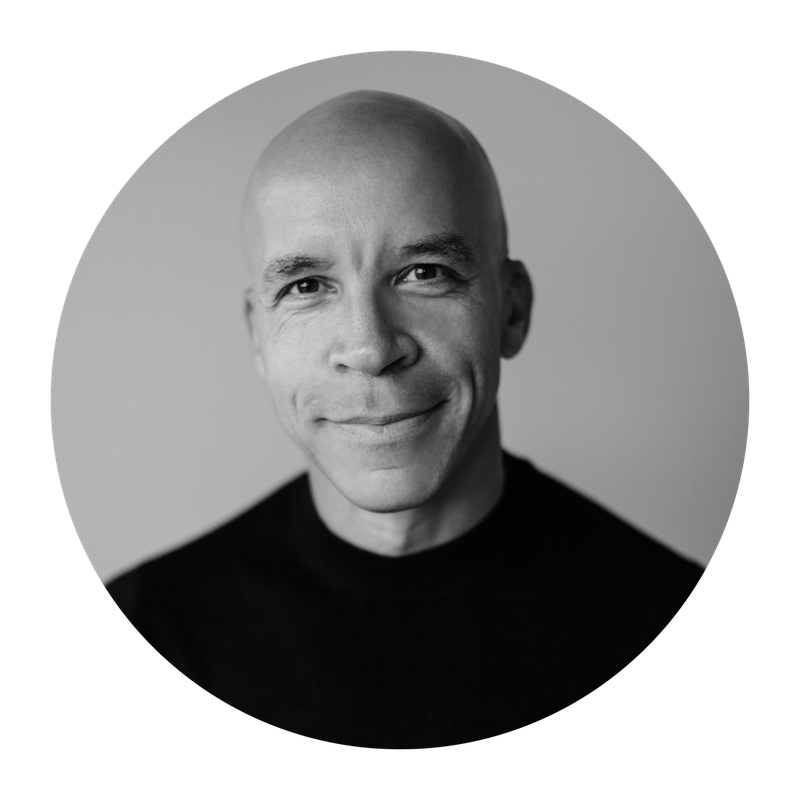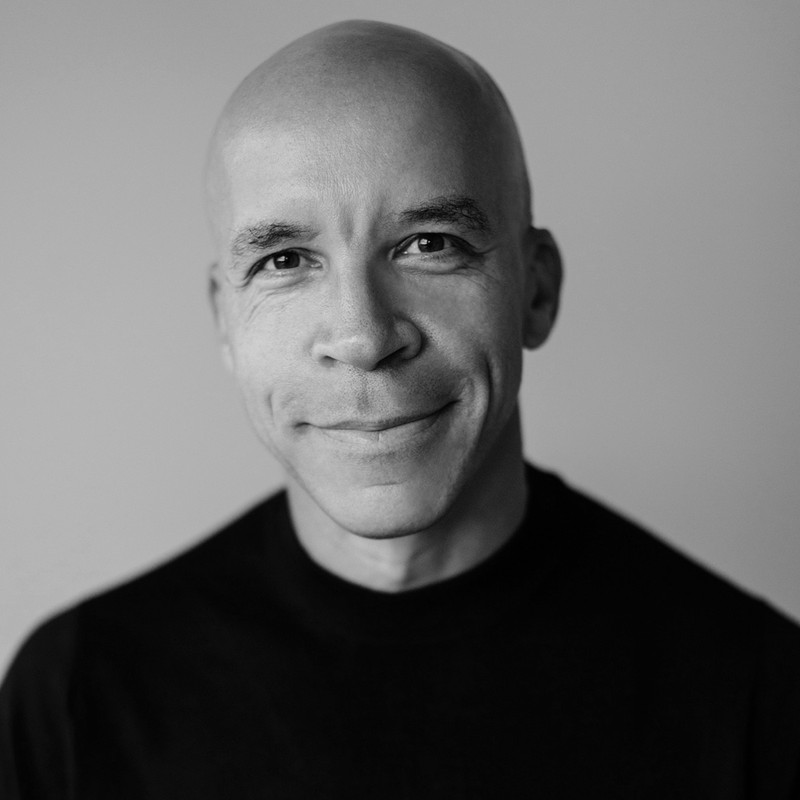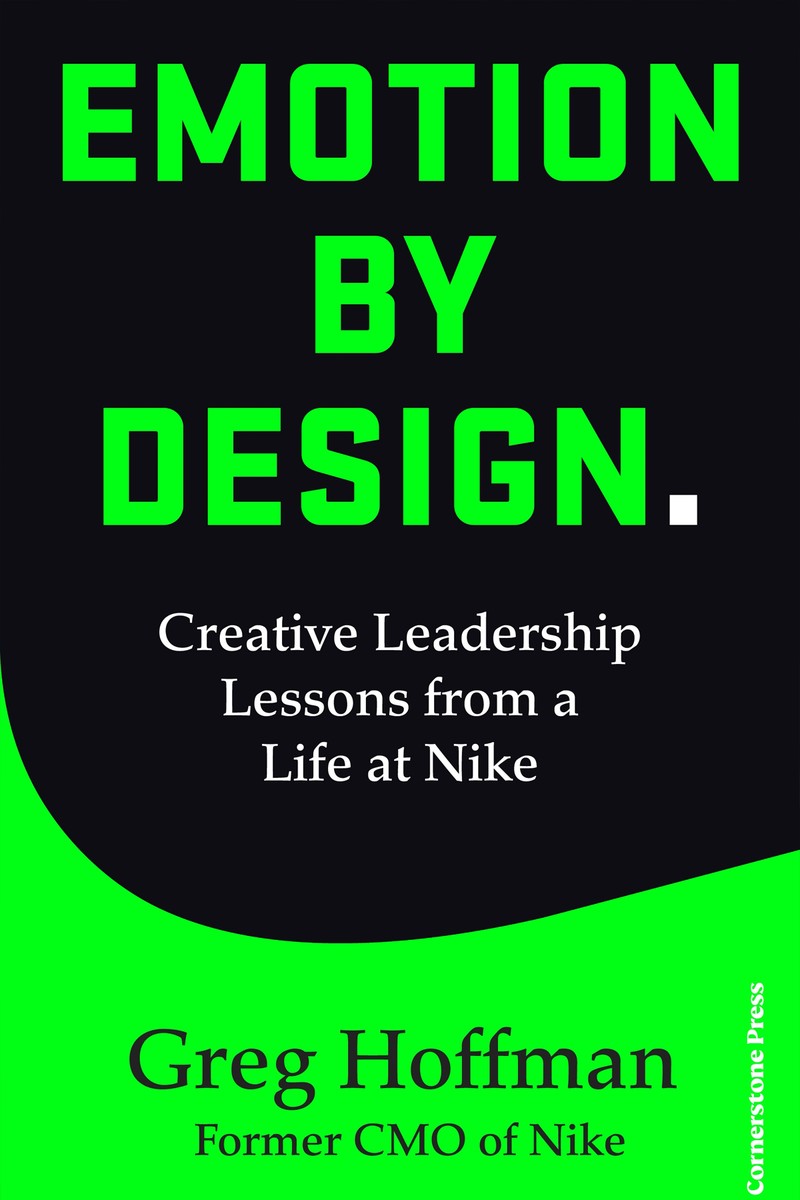What I’ve Learnt: Greg Hoffman

I was in my senior year at college when someone told me about an internship at Nike. I had a growing affinity with the brand that started as a teenager. I had the Michael Jordan Wings poster on my bedroom wall. I came home every day and there was Jordan staring at me with a William Blake quote underneath his image: ‘No bird soars too high if he soars with his own wings.’ That’s powerful stuff. I’m from Minnesota and I had to borrow my parents’ van to drive across the country to get to Nike HQ. I even slept in it for a few nights as I got my bearings, but then I started as a graphic design intern.
The rest, as they say, is history. Over 27 years I went from graphic designer to chief marketing officer. I went from someone who communicated through their design work to leading some very large teams. I had to learn how to delegate, to provide vision and direction, and to be decisive and clear. Luckily I was allowed to find my way as a leader.
Good leadership begins with empathy. That means understanding the individuals on your team deeply. Not just what they need to do great work, but what their life experiences are, what their perspective on life is, so you can allow them to show up as themselves in the workplace. In marketing and design, the idea of living the personal in the professional is crucial. Embrace it.
I’m mixed race and adopted. I was the only person like me in an all-white school system. I experienced my share of racism early on, but those things shaped me and my perspective. When I got to Nike I was allowed to bring that into the room. If you allow people to do that, you increase your peripheral vision. This will increase your business opportunities. You’ll start to see communities and people who don’t have access to your innovation and inspiration. That’s the power of diversity. It’s not a numbers game; done properly, it’s the oxygen of creative pursuit. Whether you’re managing a team of six or 600, diversity is really important right now.
Listen before you lead. I had to learn this. I’d walk into rooms with preconceived ideas and not listen to the athlete across the table or the community on the ground. I might end up creating something that looked impressive at face value, but it would lack the connectivity or that big truth. You can only get to those big truths if you have empathy, and if you start with your audience or your community, rather than pursuing your own vision of what something should look like.
There’s a World Cup or summer Olympics every two years. At Nike, each one had a kind of ramp up, as we tried to bring into the world a campaign around them that was distinctive and memorable – and for a new generation every time. That’s where my longevity came from; I was part of a new pursuit every other year.
At Nike there is complete clarity on why Nike exists. Every employee knows the company exists to serve athletes. That’s a huge advantage: knowing your vision and your mission – where you’re going and how you’re getting there – and the values that make you who you are. Everybody who walks through the door understands them. Surprisingly, that’s not always the case, even at established brands.
Nike also has an incredible North Star on its side. To bring athletes inspiration and innovation – that’s a heavy duty, aspirational pursuit. Sign me up! It also has the power of sport on its side. Sport’s one of the few things – like music and food – that unifies people across continents, political affiliations and everything else.
Sport stirs the deepest emotions in people – and ‘Just Do It’ taps into that. It’s about feeling part of something greater than yourself; it’s a movement about human potential. It’s not just about a transactional product purchase. That’s why it’s been going strong since 1988.
‘Find Your Greatness’ was a campaign that meant a lot to me personally. It was a global campaign for London 2012. It started from the idea that there are 25 other Londons of all shapes and sizes all around the world, and they all have people playing sport, doing their version of the Olympics and finding their own version of greatness. So while the world was watching the amazing athletes at the Olympics, we focused on the amazing sport happening around the planet. It was shot in a very visceral, memorable way; we had Tom Hardy doing the voiceover, and I think it really struck a chord. People saw themselves shoulder to shoulder with Olympic athletes.
The Michael Jordan ‘Failure’ ad also stands out. At the time we were working on this, everybody was watching Michael’s unfathomable athleticism on the court – the greatest athlete in the world pursuing multiple championships. We spent time with him, learning that he had missed 9,000 shots in his career, including 26 shots that would have won games. “I've failed over and over and over again in my life. And that is why I succeed.” We can’t all relate to Michael dunking the ball from the free throw line, but we can all take inspiration from the idea of success from failure, of putting yourself in position to take the shot even if you miss. Both these campaigns are the result of a best-in-class creative process that uncovered and told the world about a unique truth.
You have to incentivise risk-taking. That’s key to a successful marketing campaign. Make it safe for your team to put themselves out there and create ideas, concepts and work that defies convention and disrupts the status quo. If you stay in the safe zone, you’re not going to create the same level of distinction and emotional connection. You need to understand your audience to create that connection, but you also need confidence – to take risks and to know that failure is a price of innovation. Not all of your ideas are going to make it and you need to be comfortable with that.
Get outside yourself. This is also incredibly important. There are so many examples of this, but the big one is Nike Air. Arguably the greatest innovation in sneaker history – from a cushioning standpoint at least – and it came from space exploration. A Nasa engineer came to us because he’d been experimenting with blow moulding tech in astronauts’ helmets. Nike was open to this and it led directly to what we all know today as Nike Air.
The most impressive sportsman I ever worked with was Kobe Bryant. As a creative partner, he was amazing – boundless courage and curiosity. His pursuit of growth outside the game of basketball was remarkable. He was so engaged in the worlds of film making, technology and art. Anytime you sat down with him, he would have all these rich points of inspiration and he’d be ready to share them with you. It’s incredible to think he was driving his team to be the best in the world on the court, while finding time each day to look outside himself at what was happening elsewhere. He was bringing this into Nike, making our jobs inspiring – and also easier. Complacency is the enemy of creativity, and he stands out as someone who had such a creative mindset that he fuelled through curiosity.
Finding inspiration like that should be a daily habit. Don’t wait for it to hit you by chance. Give yourself homework: today I’m going to meet this person, tomorrow I’m going to cold-call this leader in their field because I want to pick their brain; when I go to that city, I’m going to go to these new places, that studio, this museum. Last time I counted, I had about 5,000 screenshots on my phone. The vast majority don’t lead to anything, but it only takes one of them to hit and lead to an innovation – the next Nike Air…
Roger Federer is special too. Just the fact he could win – that he could be so dominant in his space – with that level of humility and humanity. He’s another one who shows that athletes are multidimensional humans too. So often all we see of them is their sporting excellence, and the drive and expertise that goes into creating a generational talent. Our job was to go beyond that and reveal the full mosaic of their personalities – their humanity.
The very best athletes are at their best when it matters most. That’s what sets them apart – and what they have in common. They can focus at the highest level of competition and they consistently execute in those moments.
The Air Jordan 3 is my favourite Nike product. Or maybe the Air Jordan 11. I’ll say they’re tied for number one all-time greatest sneaker designs. I wear the Jordan 3 the most, I think, but what they both have is style and performance. There’s a personality and soul to them – they’ve got a character and they’re loaded with emotion even when they’re just sitting on a shelf. I think a lot can be learned just looking at those two styles.
It's just as hard to pick between Ronaldo and Ronaldinho. I worked with the Brazilian football team from the mid-90s onwards. Both of them played with a smile on their faces and both were the best player in the world at different moments. They played the game in such a dynamic, beautiful way. You could see the joy, the passion they had and that they shared with everybody watching. That’s why they were transcendent and why we’ll look back on them as icons. Passion, joy, style and performance – I think I just worked out the formula.
As a master marketer, Greg explains why creativity matters – and why even left brains can be creative…
It doesn’t matter whether you’re building a personal brand or a Fortune 500 brand. You need creativity. Not pure artistic creativity, but applied creativity – creativity that’s used to solve a problem. Building any kind of brand is an art and a science. Creative problem solving is on the art side and I feel like it’s being squeezed out of the process a little bit. In this digital age we have all of these amazing tools, capabilities and platforms – we can use machine learning and algorithms to be faster, more productive and more timely in everything we do for our audience. But it’s creativity that leads to strong emotional responses in that audience – and that feels like it’s been shelved a bit. That’s why I wrote my book, as a call to arms – to remember and realise the power of creativity to create strong emotional connections.
Creative problem solving comes in two parts. If you’re a business owner today, you have to operate at the speed of your audience, and they are moving very fast, have shorter attention spans and higher expectations than ever before. So speed and agility are crucial, but you also need empathy. Whether you’re designing a product, creating an ad or developing an app, you have to have a deep understanding of the needs of your audience. This goes beyond observations and assumptions. It takes work to get to the truth or insight you want to reveal to your audience.
The second part is curiosity. It’s important everybody trains their curiosity muscles to find more inspiration. Inspiration is the lifeblood of creativity. You can find inspiration out in the world – through technology, entertainment, architecture – or you can find it through your phone. The key thing is to bring it back to your company, or your community, or just to fuel your own passions and hobbies outside the workplace.
Creativity is a team sport. Brands like Tesla, Apple and Nike celebrate and protect a creative culture. Whether they’ve got ‘creative’ in their job title or not, everyone in those organisations understands the power of creativity in enabling those businesses to build affinities and influence the world in a way that goes beyond just their products.
All of us can be creative. We live by a very old definition of what a creative person is. When you’re young, you can either draw or you can’t. If you can’t you grow up thinking you’re not creative. I want to dispel that myth. Yes, some people are creative in the sense that through experience and education they are skilled in architecture, film production, writing or whatever. But when it comes to ideation – the creation of ideas – it doesn’t matter whether you think of yourself as right brained or left brained. We can all participate.
Greg Hoffman’s Emotion By Design is out now. Buy it here.
All products on this page have been selected by our editorial team, however we may make commission on some products.
DISCLAIMER: We endeavour to always credit the correct original source of every image we use. If you think a credit may be incorrect, please contact us at [email protected].



